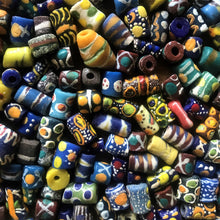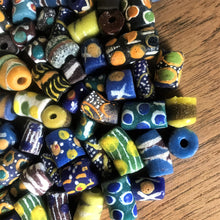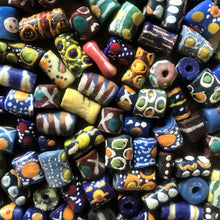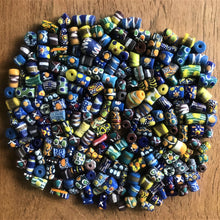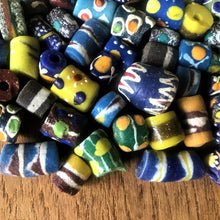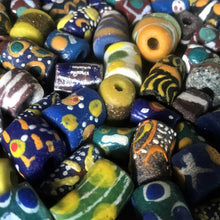
If you’re in love with African beads – you’ve come to the right place. We’ve got lots of them.
This multicoloured collection weighs in at almost half a kilo and contains around 200 handmade sandcast glass beads, which have been made by the Yoruba people of Nigeria, Togo, and Benin, as well as the Krobo people from the eastern region of Ghana.
And what’s so remarkable about these beads is that they’ve been made by using the same traditional tools and the artisans have adopted similar methods as their ancestors have done for centuries.
The highly sought after and collectible beads measure roughly 10-20x10mm, have a 2mm hole and each one has been individually crafted.
They’re not only becoming rare, but they are also incredibly beautiful and would provide lots of potential for creativity for those artisans with a bent for creating amazing tribal or boho-inspired ethnic style or statement jewellery such as necklaces, bracelets and leg bangles.
And cheap as chips at less than $0.50 cents each!
So how are these wonderful beads made?
First, old bottles, broken glass, jars and clay are sorted into colour groups then pulverised separately into a fine powder using a mortar and pestle.
The powder of choice is poured into specially designed molds, in order to produce layers and distinctive patterned designs.
The stem of a Cassava plant is then placed through the centre of the powder to form the hole in the bead.
The molds containing the powdered layers are then heated at an extremely high temperature in crude wood-burning kilns – which initiates the powder to liquify into a molten solution that will cook the bead to perfection - while the Cassava stem burns out.
The photo illustrates what you can expect, however, there may be some minor variations depending on availability.






